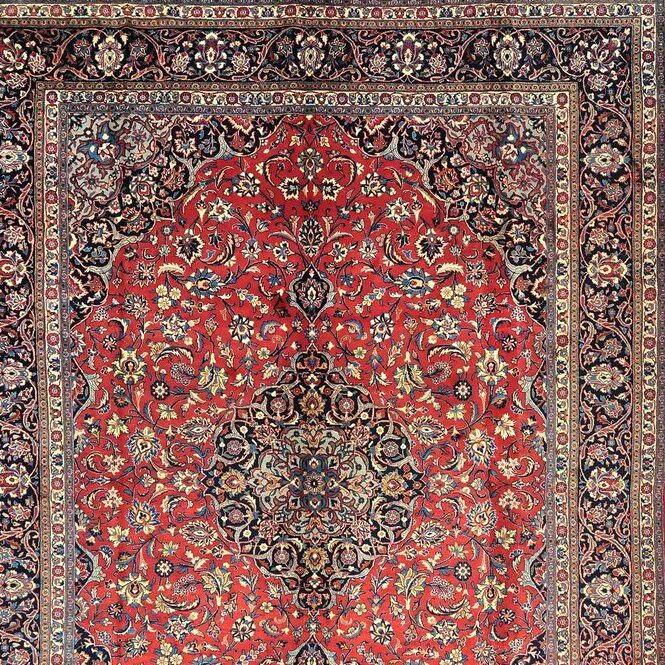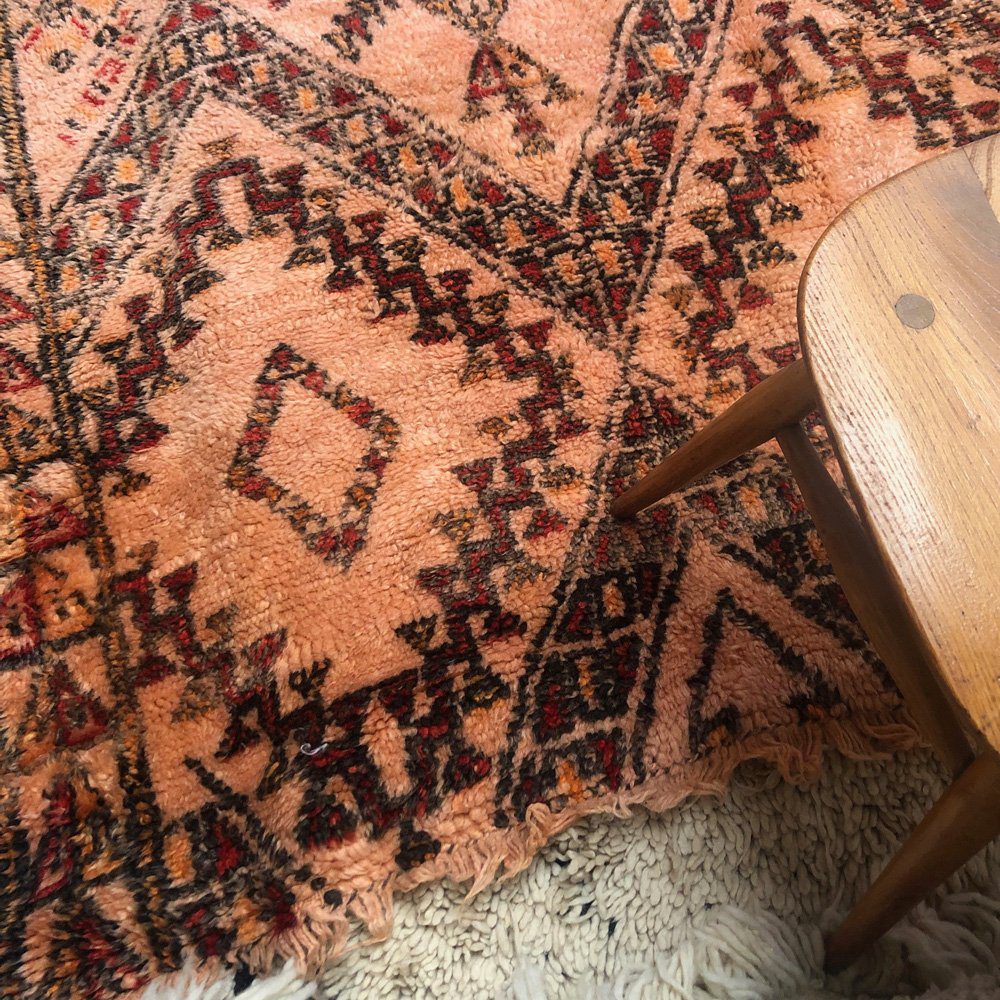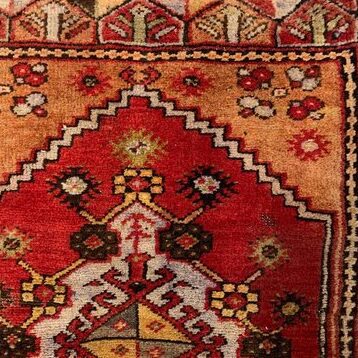The Essence of Moroccan Rugs
The Timeless Beauty of Moroccan Rugs
Moroccan rugs, known for their distinct style and rich cultural heritage, have been a staple of interior design for centuries. Originating from the diverse regions of Morocco, these rugs are more than just a decorative element; they are a testament to the country's artistic and historical legacy. The allure of Moroccan rugs lies in their unique blend of African, Arab, and Mediterranean influences, which is reflected in their diverse patterns, vibrant colors, and intricate designs.
Each Moroccan rug tells a story, woven by the skilled hands of local artisans, predominantly women, who have passed down their weaving techniques through generations. The most notable styles include the Beni Ourain, known for its minimalist approach with ivory backgrounds and simple geometric patterns, and the colorful Boujad rugs, which feature bold, abstract designs. The Azilal rugs, originating from the remote Azilal province, are celebrated for their playful patterns and use of bright, contrasting colors.
Moroccan rugs are not just about aesthetics; they are deeply embedded with cultural significance. The symbols and motifs in these rugs often have meanings linked to the weaver's life, beliefs, and the natural environment. From protective symbols to representations of fertility and strength, each motif in a Moroccan rug is a piece of the weaver's story. The craft of Moroccan rug weaving, therefore, is a reflection of the country's rich tapestry of stories, traditions, and cultural diversity.
Berber Carpets: The Heart of Moroccan Rug Artistry
Berber carpets, originating from the indigenous Berber tribes of Morocco, are at the heart of Moroccan rug artistry. These carpets are renowned for their distinct weaving style, characterized by a looped or knotted pile and often featuring natural, undyed wool. The term 'Berber' itself refers to the diverse group of tribes in Morocco, each with its unique weaving traditions and designs. The simplicity, earthy tones, and textural quality of Berber carpets make them a coveted item in the realm of interior design.
The traditional Berber carpet is typically woven in neutral shades, with the wool retaining its natural colour. The patterns are simple yet captivating, often comprising geometric shapes and tribal symbols that hold significant cultural meanings. The most famous of these carpets is perhaps the Beni Ourain rug, which has gained international acclaim for its minimalist design and luxurious feel. These rugs are known for their thick, plush pile, making them an epitome of comfort and warmth.
The artistry of Berber carpets lies not only in their visual appeal, but also in the techniques used to create them. Hand-woven on traditional looms, these carpets are the product of skills honed over centuries. The weaving process is often a communal activity, with knowledge and patterns passed down through generations. The result is a carpet that is not only aesthetically pleasing, but also a piece of living history, embodying the spirit and heritage of the Berber people. In contemporary interior design, Berber carpets continue to be celebrated for their versatility, authenticity, and timeless beauty.
Moroccan Style Rugs: A Fusion of Tradition and Modernity
Moroccan style rugs, with their unique fusion of traditional craftsmanship and modern aesthetics, have become a symbol of cultural amalgamation. These rugs often incorporate the historic art of Moroccan rug-making with contemporary design elements, making them a favourite among interior designers and homeowners alike. The fusion of old and new in Moroccan style rugs is seen in the blending of classic Moroccan motifs with modern colours, patterns, and textures.
The versatility of Moroccan style rugs lies in their ability to adapt to various interior settings. Whether it's a minimalist, Bohemian, or eclectic style, these rugs add warmth and character to a space. The use of vibrant colours and bold patterns in Moroccan style rugs is a nod to the country's rich artistic heritage, while the integration of modern design elements ensures these rugs maintain a contemporary feel.
In crafting these rugs, artisans often experiment with different materials, including wool, cotton, and synthetic fibres, offering various textures and finishes. The creativity in design and versatility in material make Moroccan style rugs not just a decorative piece, but a statement of cultural fusion and modern adaptability. From plush, high-pile rugs ideal for a cosy living room to flat-weaves suited for a sleek, modern space, Moroccan style rugs cater to a wide range of tastes and preferences, reflecting the dynamic nature of modern Moroccan artistry.
Joe Rugs - Carpet Expert
Hello! I'm Joseph Rugs, the founder of CarpetJoe.com and your guide through the intricate world of carpets. Born and raised in London with a deep-rooted passion for art and culture, I've explored the globe to bring the rich tapestry of carpet weaving right to your screen. My academic background in arts and humanities from Oxford has fuelled my curiosity, leading me to uncover the stories behind every knot and weave. As a family man, my adventures are shared with my loved ones, enriching our lives with every piece of art we encounter. Join me as we explore the beauty and craftsmanship of carpets together.
Caring for Your Moroccan Rug: Maintenance Tips
Caring for Moroccan rugs is essential to maintain their beauty and longevity. Moroccan rugs, known for their delicate fabrics and vibrant colours, require specific maintenance techniques. Regular vacuuming is crucial to remove dust and debris, but it should be done gently to avoid damaging the rug's fibres. For spills, immediate blotting with a clean, absorbent cloth is recommended to prevent stains.
Deep cleaning of Moroccan rugs should be approached with caution. It is advisable to consult a professional, especially for high-value or antique rugs. If cleaning at home, use mild detergents and avoid harsh chemicals that can fade the colours or damage the fibres. Drying the rug properly after cleaning is also important to prevent mould and mildew growth.
Additionally, Moroccan rugs should be rotated regularly to ensure even wear and exposure to sunlight. Protecting rugs from excessive sunlight can prevent fading, preserving their vibrant colours. With proper care and maintenance, Moroccan rugs can remain a cherished part of your home decor for many years, retaining their beauty and cultural significance.
Moroccan Rugs: Value, Cost, and Investment
The value and cost of Moroccan rugs are influenced by several factors, making them not only a beautiful addition to any home but also a potential investment. The price of a Moroccan rug can vary widely based on its age, size, material, and the intricacy of its design. Antique and hand-woven rugs, especially those with historical significance or unique patterns, are often more expensive due to their rarity and craftsmanship.
The investment value of Moroccan rugs lies in their ability to appreciate over time, particularly for well-maintained antique pieces. The market for Moroccan rugs is dynamic, with a growing appreciation for their cultural and artistic worth. Collectors and enthusiasts often seek out unique Moroccan rugs for their beauty and the stories they tell.
When considering purchasing a Moroccan rug, it's important to research and verify its authenticity, especially if it's being sold as an antique or hand-woven piece. Understanding the rug's origins, the reputation of the seller, and the materials used in its construction can help in making an informed decision. Whether as a centrepiece in your home or as part of a larger collection, Moroccan rugs offer a blend of aesthetic appeal, cultural richness, and potential financial value.
Common Types or Rugs
Each type of Oriental rug has its unique charm and story, making them more than just a luxury item; they are a piece of their country's cultural legacy. Collectors and enthusiasts of Oriental and Persian rugs appreciate them not only for their aesthetic appeal but also for their cultural, historical, and artistic significance.

Persian Rugs
Originating from what is now modern-day Iran, Persian rugs are celebrated for their unparalleled craftsmanship and enduring beauty.

Berber Rugs
Originating from the Berber tribes of North Africa, particularly Morocco, this type of carpet is renowned for its rugged texture and resilient nature.

Turkish Rugs
Turkish rugs have a legacy steeped in history and artistry, and have always been a symbol of exquisite craftsmanship and cultural significance.
Frequently Asked Questions
Cleaning a Moroccan rug requires gentle handling. Regular vacuuming with a brushless suction head is advised to prevent damage to the fibers. For spills, blot immediately with a clean, dry cloth. Avoid harsh chemicals; instead, use mild soap and water for spot cleaning. For thorough cleaning, professional rug cleaning services are recommended, especially for high-value or delicate rugs.
The cost of a Moroccan rug can vary widely based on factors like size, material, craftsmanship, and origin. Handmade, authentic Moroccan rugs, especially those with unique designs or antique value, can be more expensive. Prices can range from a few hundred to several thousand pounds, depending on these factors.
Berber carpet is a distinctive style of carpet characterized by its loop pile construction and typically flecked color patterns. Originally made by the Berber tribes of North Africa, these carpets are known for their durability and resistance to footprints and vacuum tracks. Berber carpets can be made from various materials including wool, nylon, and olefin.
Berber carpets are made from various materials, each offering different qualities. Traditional Berber carpets are made from wool, known for its durability and luxurious feel. Modern Berber carpets are often made from synthetic materials like nylon and olefin, which are less expensive and offer stain resistance.
To repair a run in a Berber carpet, begin by stopping the run from further damage using glue or a carpet adhesive. For larger runs, it may be necessary to cut out the damaged section and replace it with a patch, matching the carpet’s pattern and direction. Hiring a professional carpet repair service is recommended for seamless results.
To clean a Berber carpet, regular vacuuming without a beater bar is recommended to prevent damage to the loops. For spills, blot immediately and clean with a mild detergent solution. Avoid soaking the carpet as Berber’s tight weave can hold moisture. For deep cleaning, it’s advisable to hire professional cleaners experienced with Berber carpets.


